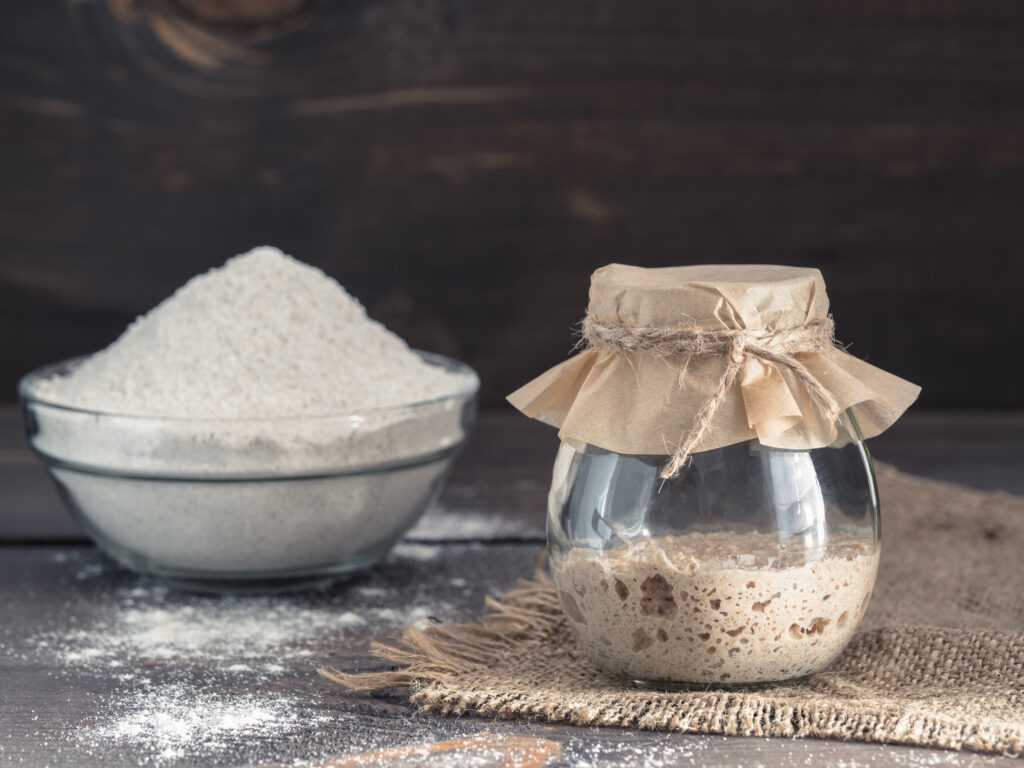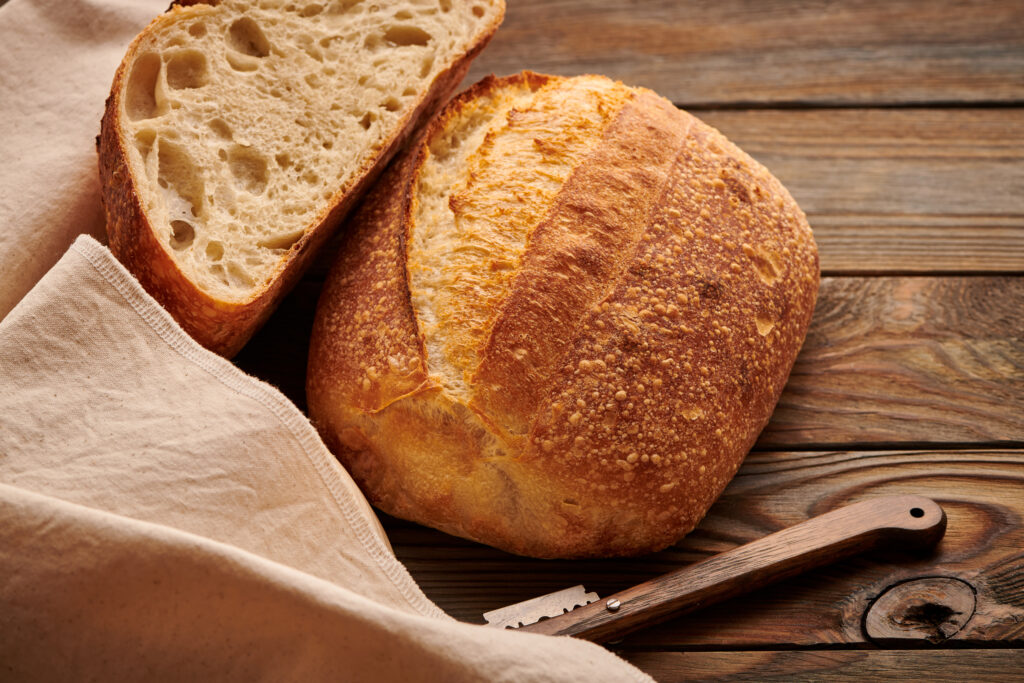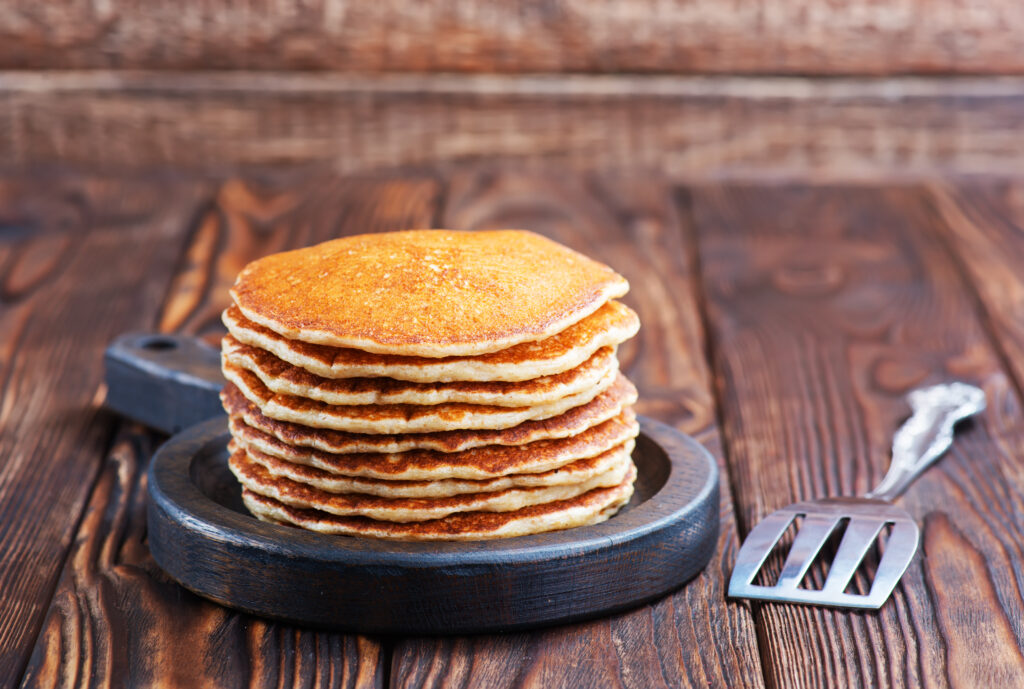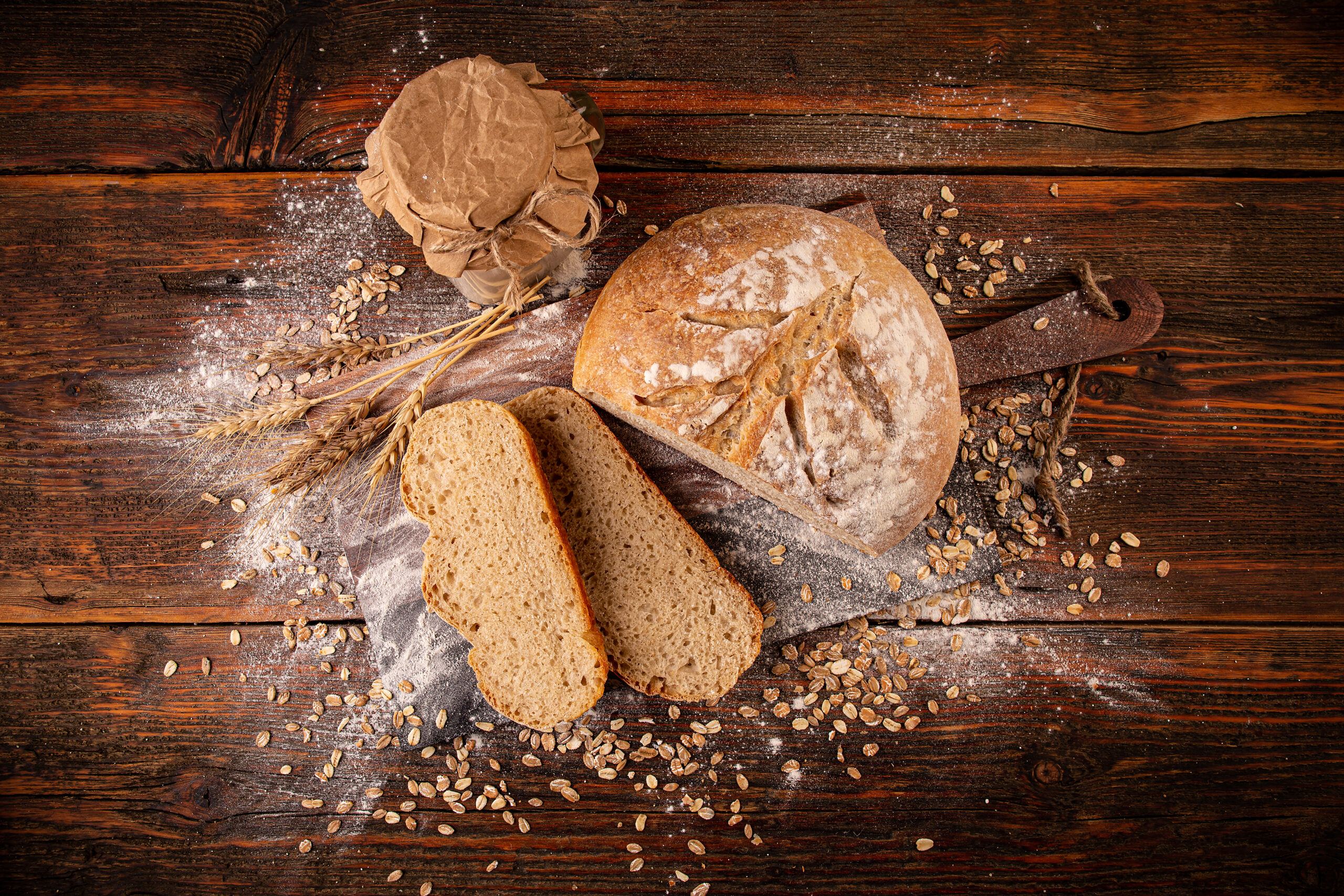First of all, making your sourdough is rediscovering the pleasure of taking the time. The good smell of bread just out of the oven or the satisfaction of tasting the first slice.
This is happiness therapy!
The origin of sourdough
To better understand the behaviour of sourdough, let’s learn a little more about its origins. We know that the first illustrations that symbolise it dates from the Egyptian Old Kingdom (2700 to 2200 before our era). But no date or verifiable origin is possible, so much the leaven is archaic. The most common story says that bread was born during the 5th millennium BC and would be the result of chance. That one day on the banks of the Nile, a preparation based on boiled raw cereal would have been forgotten. It would thus have fermented and therefore swelled when cooked. The Egyptians had just discovered the first fruits of sourdough bread.
Now we know we need grain, water and time.

Why make sourdough bread?
Nowadays, we are aware that eating good quality food preserves our health. Making sourdough bread means providing your body with digestible, balanced and nourishing food.
It’s just incredibly perfect and it’s tasty too!
Advantages of sourdough bread
- Sourdough makes bread more digestible thanks to the good bacteria (lactic and acetic) that it develops during fermentation.
- Bacteria also increase its conservation and maintain the humidity of its crumb. The bread thus remains intact for up to 7 days depending on the quality of the flours and the storage conditions.
- The incomparable taste that fermentation will give it by developing its aromas and character.
- Sourdough improves the intestinal flora by providing probiotics. These appear when the yeast feed and modify the carbohydrates contained in the flour.
- The satisfaction of creating sourdough and succeeding in obtaining an airy and crispy bread!
Cons of sourdough bread
- You have to anticipate your need for bread, because the activation of the sourdough takes a long time! To overcome this problem, you can freeze bread in slices and thus have reserves.
- The preparation of the dough involves being present for the first 4 to 6 hours.

How to make sourdough
Allow a period of 8 to 10 days to pamper your budding sourdough.
- Day 1: In a 1 l glass jar, mix 25 g of rye flour (organic if possible) with 25 g of white flour. Then add 50 g of non-chlorinated water and mix with a spoon. Cover the jar with a cloth and set it aside for 24 hours (at room temperature).
- Day 2: Discard half of the contents of your nascent sourdough, it is important to maintain a good level of acidity! Later, you can use your superfluous sourdough in baking. Then, the sourdough is refreshed with 50 g of white flour and 50 g of water. Cover it and let it sit for 24 hours.
- Days 3-5: keep 50 g of the leaven of the day before and add 50 g of white flour and 50 g of water. Mix well, cover. Repeat the operation twice (days 4 and 5).
- Days 6-8: Repeat the previous operation every 12 hours.
To see if your sourdough starter is vigorous, mark the height of the preparation for the jar. The level should double or even more once your sourdough is active. It may take a few extra days.
If you don’t make bread every day, keep your sourdough in the refrigerator and refresh it every 7 days, to nourish it.
Active sourdough is used for bread. On the other hand, what is taken during cooling (inactive sourdough) can be used for other preparations, such as pancakes (see below).

Sourdough Bread Recipe
Ingredients:
- 100 g active sourdough
- 500 g flour
- 330 ml of water
- 10 g salt
Steps
- The day before (10-12h before) take 20 g of your sourdough starter, feed it with 40 g of flour + 40g of water and mix. You will thus obtain 100 g of active sourdough.
- Mix 500 g of flour with 330 ml of water and leave to stand for 45 min.
- Add the sourdough and knead until you get a smooth dough. Let stand 45 min.
- Add the 10 g of salt to the dough and knead for 5 min.
- Transfer to a large greased dish. Then make 4 flaps, i.e. gently pull on the dough to fold it back on itself. From left to right and from top to bottom and vice versa. Let stand 45 min.
- Make 4 flaps and let it stand 45 min.
- Make 4 flaps and let it stand 45 min.
- Pour your dough on a floured surface, form a ball, then leave to rest for 20 minutes under a cloth.
- Make a few flaps to give it shape and let it rest again for 4 to 6 hours in a floured dish.
- Preheat your cast-iron casserole dish to 220°C in the oven. Place the dough on a sheet of parchment paper and make a few slits on top.
- When the oven is hot, place the bread in the pan and cook, covered, for 20 minutes. Remove the lid and continue cooking for another 20 minutes.
- If you do not have a leather casserole on a plate about 30 min.

Inactive sourdough pancake recipe
Ingredients :
- 150 grams of unrefreshed sourdough
- 150 grams of flour
- 2 tbsp of sugar
- ½ tsp sodium bicarbonate
- 1 pinch of salt
- 1.5 dl of milk
- 2 tbsp neutral oil
- 1 egg
Steps
- In a bowl, mix the solid ingredients
- Make a well in it and add the sourdough, egg, milk and oil. Whisk everything to obtain a homogeneous paste.
- Leave to stand for 5 minutes.
- Heat a nonstick skillet over medium heat.
- Once it is hot, you can start cooking your pancakes.
- Pour a ladle of the preparation into the pan to form a pancake about 8 cm in diameter.
- Let it cook until big bubbles burst on the surface then turn it over. Let the other side brown and serve. Depending on the dimensions of your pan, you can cook several pancakes at the same time.
Enjoy without delay!



Leave a Reply